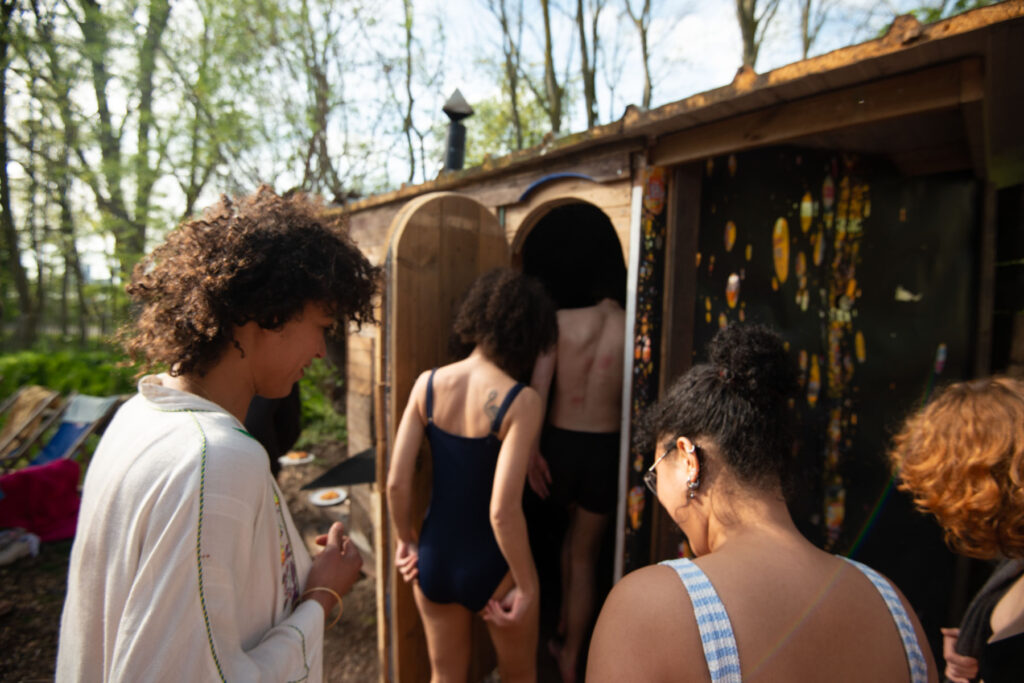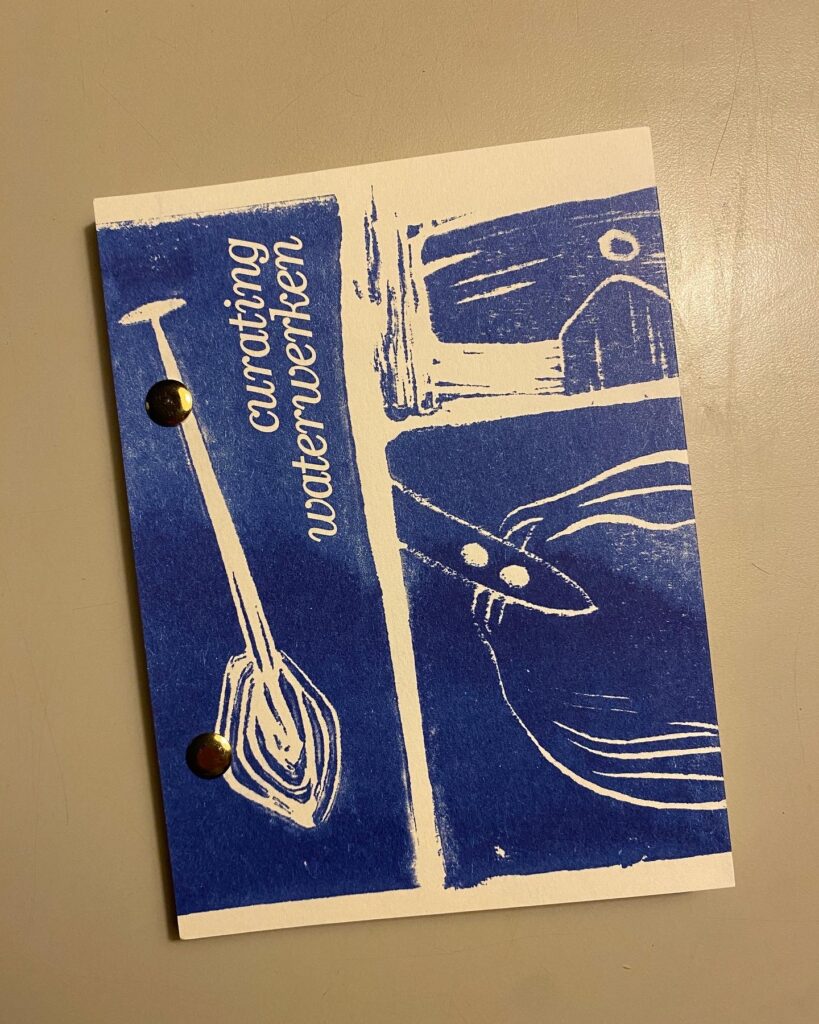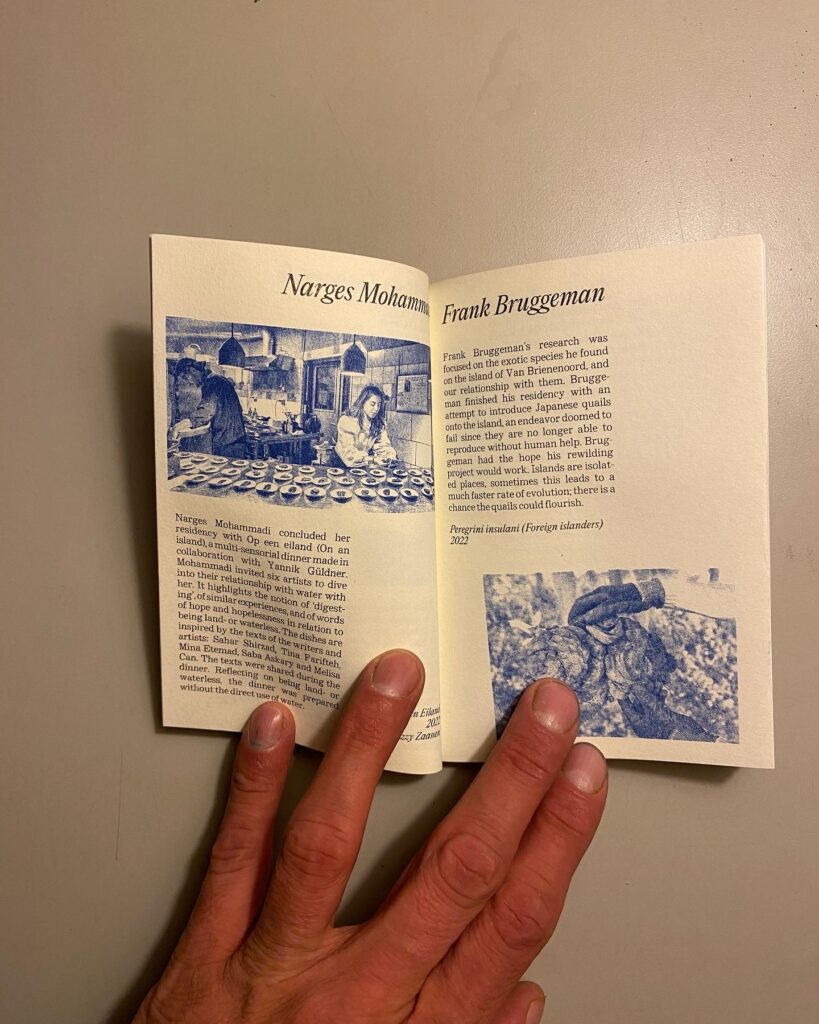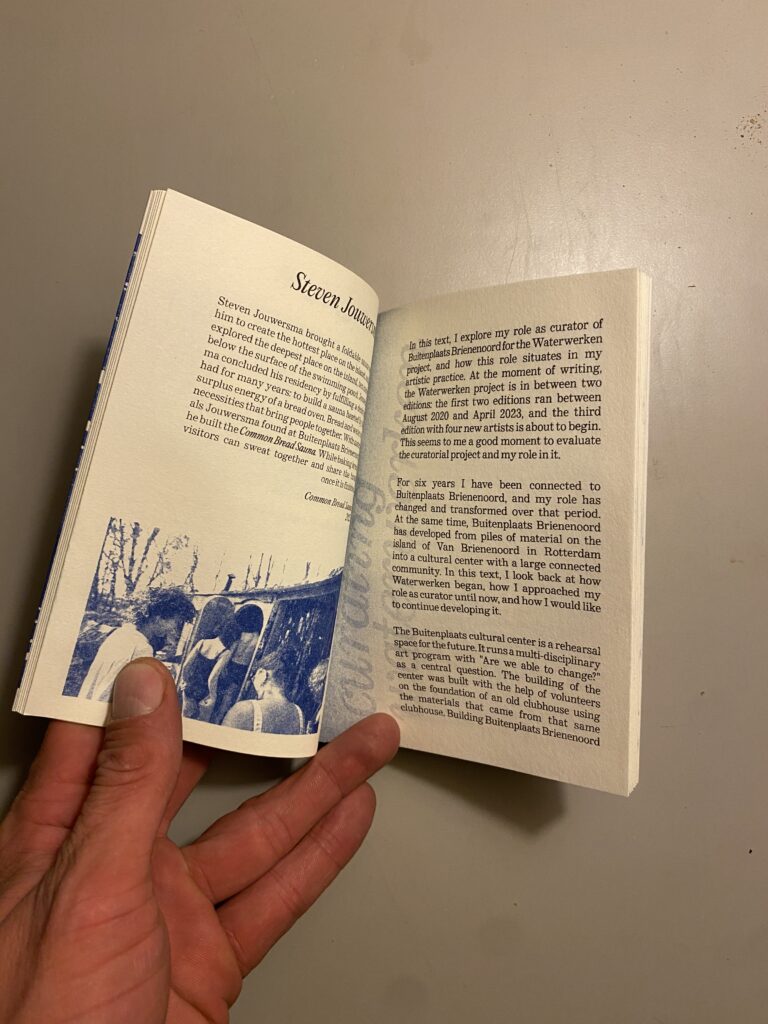Waterwerken in a residency project at Buitenplaats Brienenoord initiated in collaboration with Sander Zweerts de Jong. Rotterdam, started in 2020
After the tenth artist it made sense to look at the project and the curatorial proposal and to find out if and how to continue. To explore this I joined the a.pass Research Center which resulted in the publication ‘Curating Waterwerken’ (2023) – Published bij a.pass and Buitenplaats Brienenoord, edited by Vladimir Miller, proof read by Sarah Cale, graphic design and print by Sadie Girigorie & Sevgi Tan
The publication consist of short introductions to the projects and an essay
https://www.buitenplaatsbrienenoord.nl/
Introductions to the ten projects:
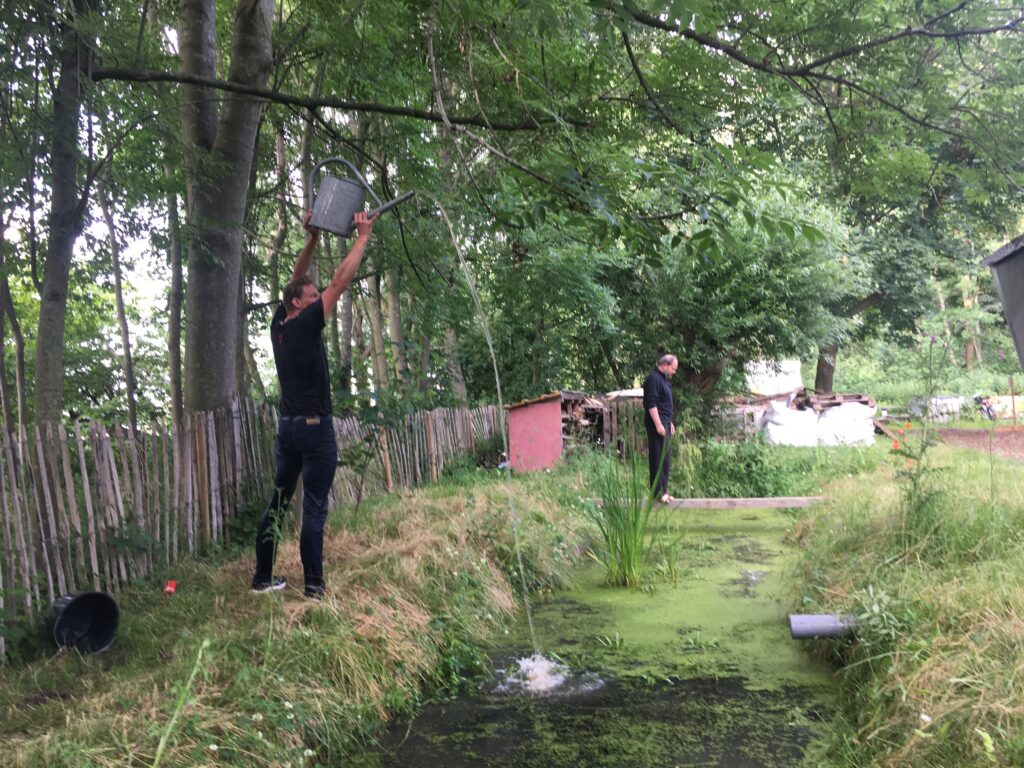
2 Elen Braga
Elen Braga explored the meaning of water as a medium that connects people and goods, and brings together global histories. Braga’s presentation concluding her residency, Zand Erover, focused on the literal meaning of this saying and how we systematically transform water into land fit for human use. Braga’s interest in human control over nature is interwoven with her personal experience while working on the island and the Dutch invasion of her home country Brazil in the 17th century. Braga’’s presentation consisted of several tapestries, an installation with boiling water and sixteen palm trees with ceramic leaves.
http://www.elenbraga.com/zand-erover/
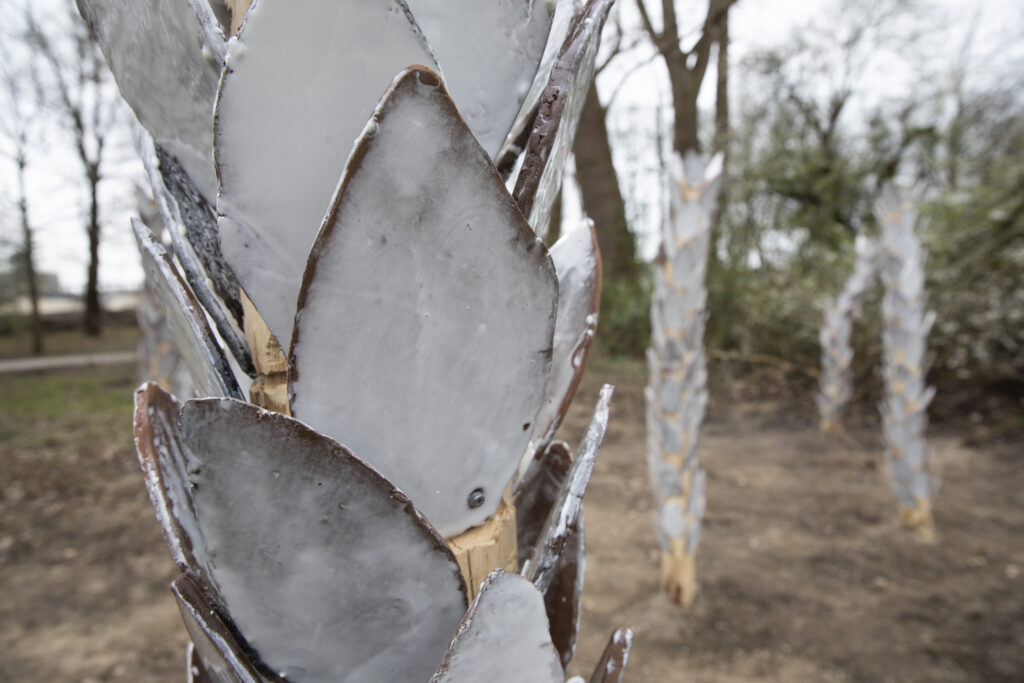
3 de Onkruidenier
How do we perceive the landscape when we leave the fast-pace of our economic times behind us, and adapt to the rhythm of the tides? What do we see, feel and experience in harmony with the plants and organisms in a maritime ecosystem? De Onkruidenier pleads for a shift in perspective to a state where mankind is the one that adapts to its surroundings. De Onkruidenier explored training techniques for a new kind of human: the salt-loving human. De Onkruidenier consists of Rosanne van Wijk, Ronald Boer and Jonmar van Vlijmen
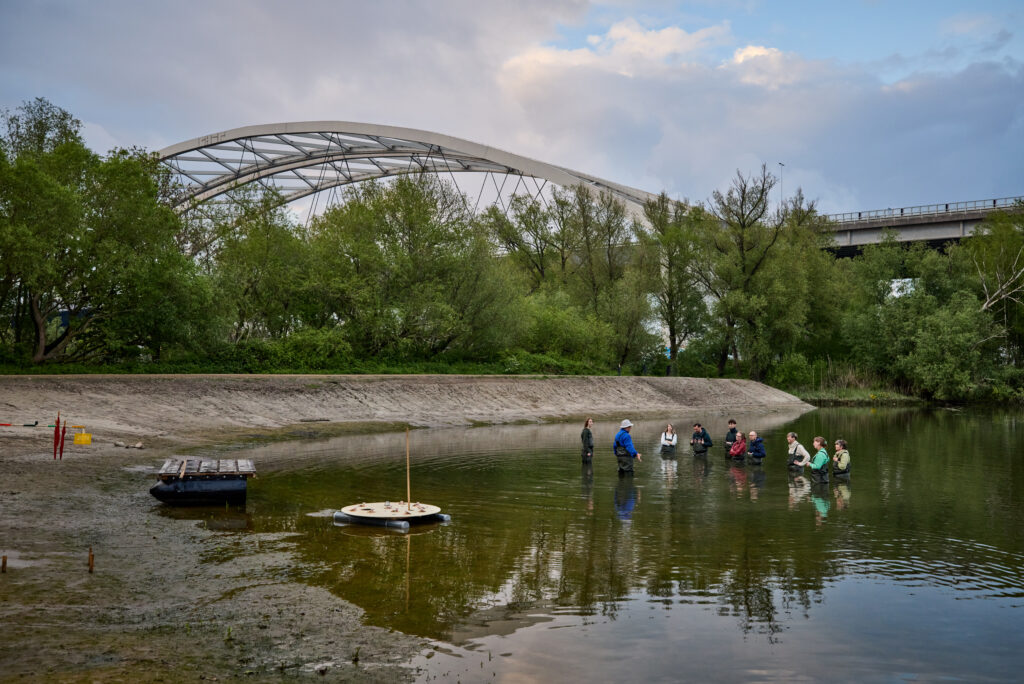
4 Maud van den Beuken
Maud van den Beuken scans, defines and measures physical space looking for relationships with the space surrounding us. Often van den Beuken works together with scientists, engineers and experts to map the landscape with scientific tools and instruments. During her residency, van den Beuken wondered what it would entail to scan and measure the bottom of the waters around the island of Van Brienenoord by herself. Together with people from Buitenplaats Brienenoord, van den Beuken built a raft and invited people to explore the waters around the island with her.
https://www.maudvandenbeuken.nl/
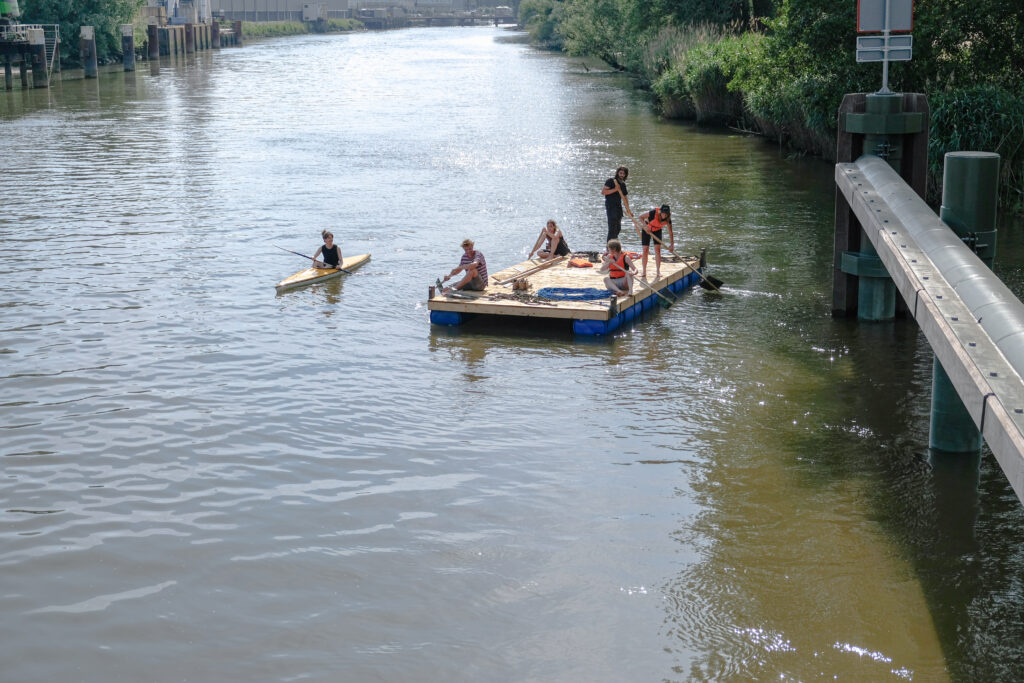
5 Víctor Santamarina
Víctor Santamarina experienced the island of Van Brienenoord as a place in constant transformation. From caterpillars to rainfall, many forces come together and redefine the landscape continually. Santamarina found this continuous transformation most notably in the tides. The tides don’t just change the contours of the island, it covers and reveals whole bits of island twice a day. Santamarina concluded his residency by presenting Foundation, a site-specific sculpture in the zone between high and low water.
https://www.victorsantamarina.com/
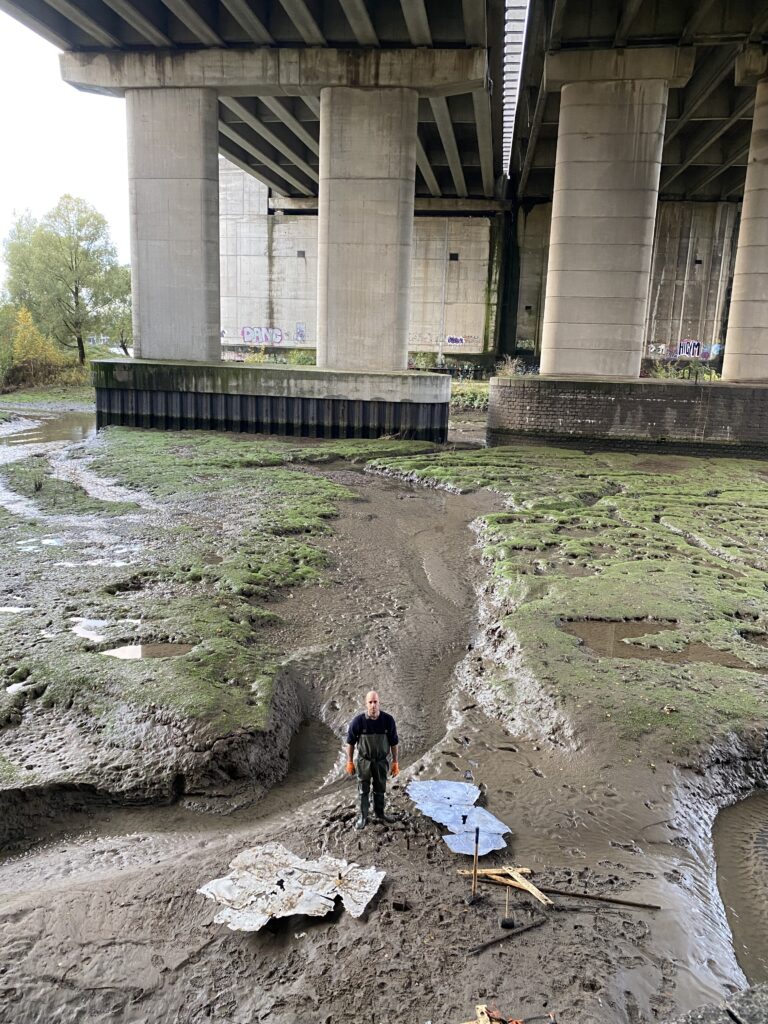
6 Josje Hattink
Waterwolf is about the animalization of nature on and around the island of Van Brienenoord. Nature is self-evident, but it is mankind that interprets it. Hattink wants to show in her project how our imagination runs free. On this island, mankind’s interpretation is ambiguous: on one side one feels safe with the water as a moat; all that is alive is easy to control. On the other side, the water can be dangerous and sneak up on one. It remains unpredictable. The Waterwolf is real.
https://josjehattink.com/waterwolf-2/
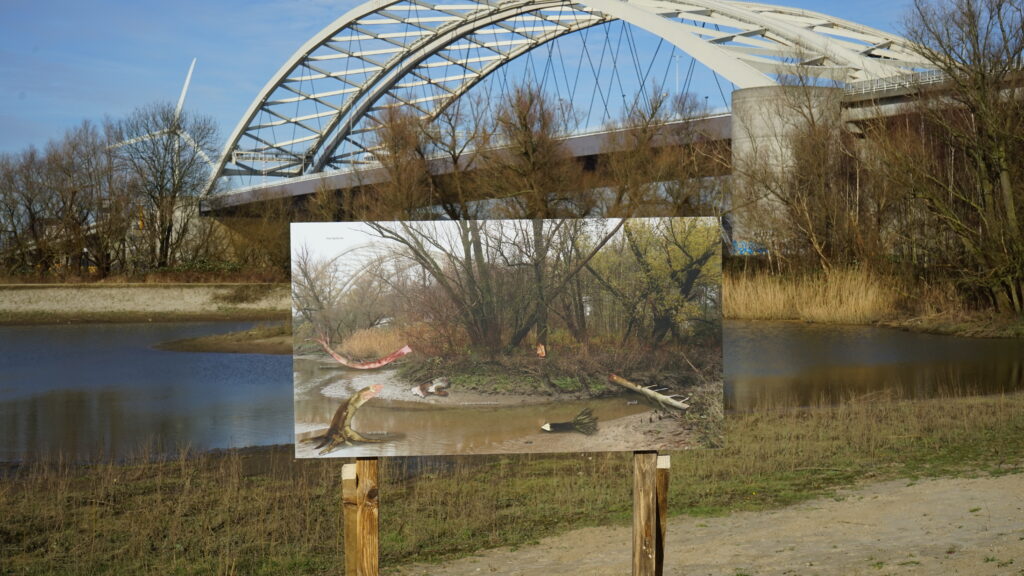
7 Pilar Mata Dupont & Erika Roux
The Polder Western is a project that uses theWestern genre to unpack various concerns regarding rising sea levels globally. Situated in the Netherlands, a country where Pilar Mata Dupont and Erika Roux have lived for many years, this experiment in narrative and absurdism allows the artists to research and investigate personal concerns arising from living in a vulnerable country facing complex issues such as climate change and the handling of its management. Through text-based research and interviews with multiple people working with and by the water in the Netherlands – sea-level researchers, millers, hydraulic engineers, artists and farmers – Mata Dupont and Roux developed a speculative screenplay for a film.
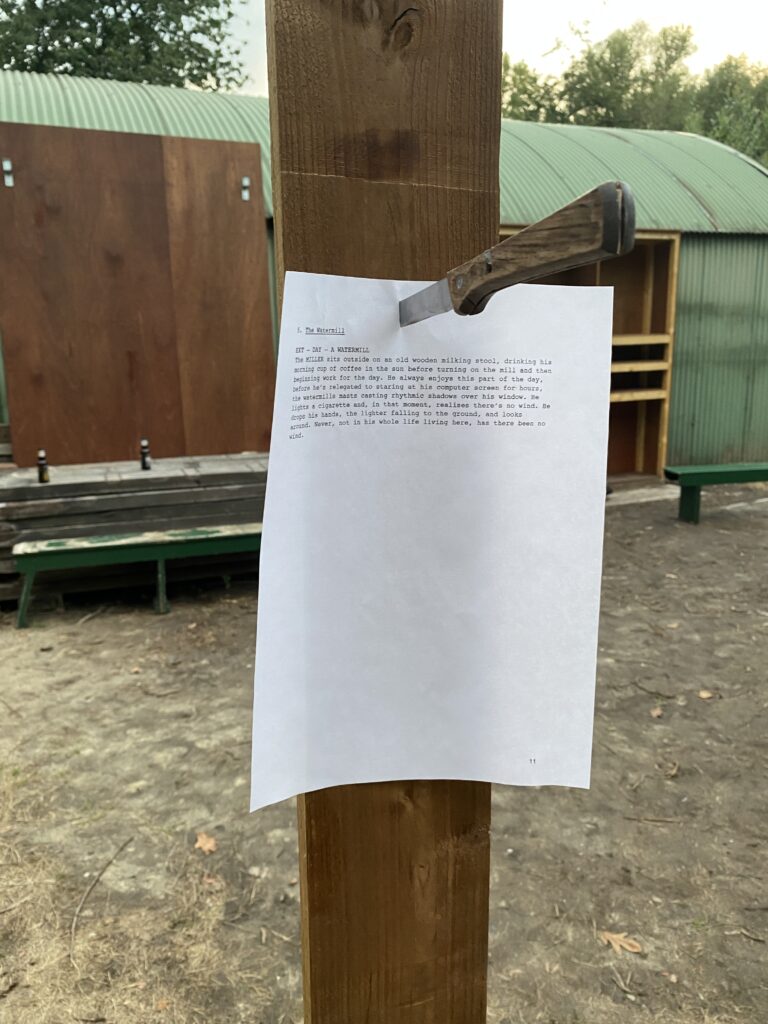
8 Narges Mohammadi
Narges Mohammadi concluded her residency with Op een eiland (On an island), a multi-sensorial dinner made in collaboration with Yannik Güldner. Mohammadi invited six artists to dive into their relationship with water with her. It highlights the notion of ‘digesting’, of similar experiences, and of words of hope and hopelessness in relation to being land- or waterless. The dishes are inspired by the texts of the writers and artists: Sahar Shirzad, Tina Farifteh, Mina Etemad, Saba Askary and Melisa Can. The texts were shared during the dinner. Reflecting on being land- or waterless, the dinner was prepared without the direct use of water.
https://www.nargesmohammadi.com/
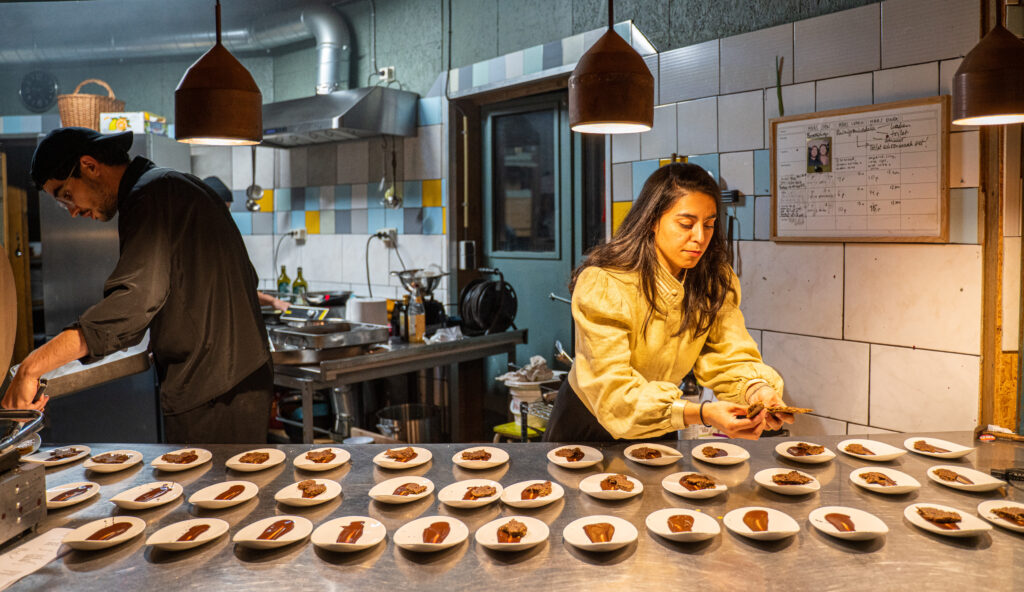
9 Frank Bruggeman
Frank Bruggeman’s research was focused on the exotic species he found on the island of Van Brienenoord, and our relationship with them. Bruggeman finished his residency with an attempt to introduce Japanese quails onto the island, an endeavor doomed to fail since they are no longer able to reproduce without human help. Bruggeman had the hope his rewilding project would work. Islands are isolated places, sometimes this leads to a much faster rate of evolution; there is a chance the quails could flourish.
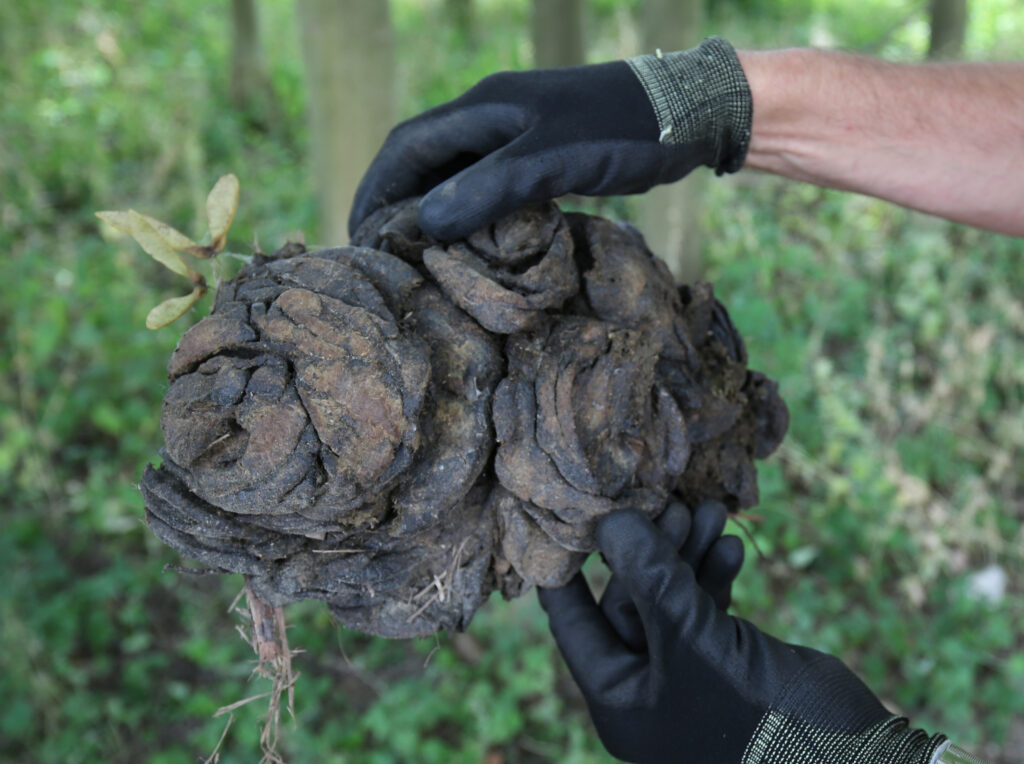
10 Steven Jouwersma
Steven Jouwersma brought a foldable sauna with him to create the hottest place on the island, and he explored the deepest place on the island, ten meters below the surface of the swimming pond. Jouwersma concluded his residency by fulfilling a desire he had for many years: to build a sauna heated by the surplus energy of a bread oven. Bread and water are necessities that bring people together. With materials Jouwersma found at Buitenplaats Brienenoord, he built the Common Bread Sauna. While baking bread, visitors can sweat together and share the bread once it is finished.
https://www.stevenjouwersma.com/common-sweat-sauna
